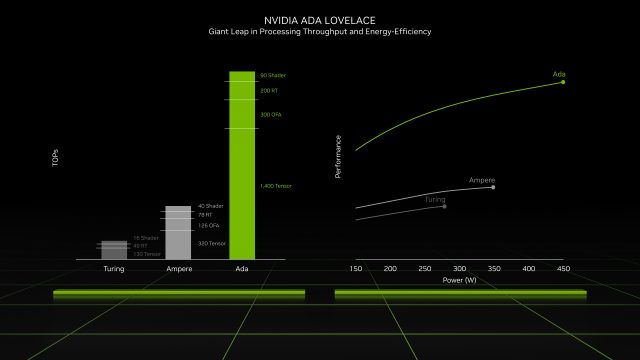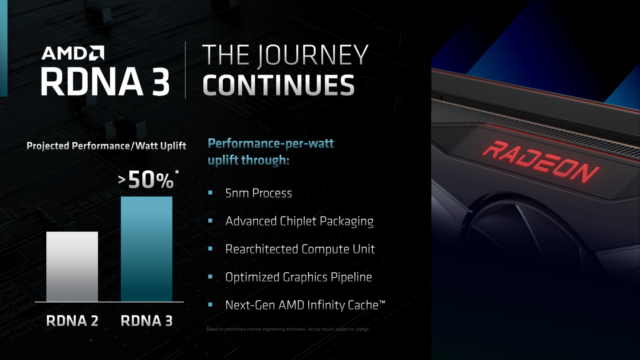
When Nvidia rolled out its new RTX 40-series graphics cards earlier this week, many gamers and industry watchers were a bit shocked at the asking prices the company was putting on its latest top-of-the-line hardware. New heights in raw power also came with new heights as far as MSRP, which falls in the $899 to $1,599 range for the 40-series cards.
When asked about those price increases, Nvidia CEO Jensen Huang told the gathered press to, in effect, get used to it. “Moore’s law is dead,” Huang said during a Q&A, as reported by Digital Trends. “A 12-inch wafer is a lot more expensive today. The idea that the chip is going to go down in price is a story of the past.”
Sorry, how expensive?
In justifying Nvidia’s price increases, Huang defended the raw power of the 40-series cards compared with past offerings. “The performance of Nvidia’s $899 GPU or $1,599 GPU a year ago, two years ago, at the same price point, our performance with Ada Lovelace is monumentally better,” he said. “Off-the-charts better.”
But those price comparisons are a bit misleading. True, the $1,599 flagship RTX 4090 is only $100 more expensive than the $1,499 launch price for the RTX 3090 in 2020. Adjusted for inflation (which has been unusually high in recent years), the launch RTX 3090 would cost more than $1,700 in August 2022 dollars, making today’s RTX 4090 look like a relative bargain.
When you look at the lower tiers, the price increases begin to look a bit less reasonable. The RTX 4080 line—split into $899 and $1,199 pricing tiers—is significantly more expensive than the $699 and $799 launch prices for the two tiers of RTX 3080 cards in 2020. Even accounting for inflation, those cards would have launched at about $800 and $900 in today’s dollars, well below what Nvidia is asking for its RTX 4080 cards now.
What’s more, the 40-series thus far has nothing even approaching the launch price of the lowest-cost 30-series option Nvidia offered in 2020—the RTX 3070, which cost $499 back then (about $567 in today’s dollars). And there are rumors that Nvidia’s low-end 4080 card is on a less-performant chipset than its more expensive cousin, making it more technologically similar to the 3070 from the last generation.

Sure, one could argue that the RTX 30-series cards were priced too low—those cards were exceptionally tough to find at their launch MSRPs at the time, in large part due to extreme interest from cryptocurrency miners. But the days of widespread GPU shortages are now long gone, as cratering crypto prices and changes in the GPU crypto mining landscape have led second-hand GPU prices to fall steadily for months. Nvidia explicitly noted this trend in August, warning investors that crypto market effects “may reduce demand for our new GPUs.”
If we can’t do it, someone else can?
Generational price comparisons aside, Huang’s blanket assertion that “Moore’s law is dead” is a bit shocking for a company whose bread and butter has been releasing graphics cards that roughly double in comparable processing power every year. But the prediction is far from a new one, either for Huang—who said the same thing in 2019 and 2017—or for the wider industry—the International Technology Roadmap for Semiconductors formally announced it would stop chasing the benchmark in its 2016 roadmap for chip development.
You could write an entire book on the implications of Moore’s law (and Ars practically has), but the core assertion laid out by Intel co-founder Gordon Moore in 1965 has remained remarkably prescient: The number of transistors per chip (keeping size/price relatively constant) roughly doubles every year (in a later update, Moore would amend the doubling time to 24 months).
As Kevin Kelly laid out in a 2009 piece, though, Moore’s law is best understood not as a law of physics but as a law of economics and corporate motivation. Processing power keeps doubling partly because consumers expect it to keep doubling and finding uses for that extra power.

AMD
That consumer demand, in turn, pushes companies to find new ways to keep pace with expectations. In the recent past, that market push led to innovations like tri-gate 3D transistors and production process improvements that continually shrink the size of individual transistors, which IBM can now push out at just 2 nm.
The point here is that Huang’s purported “death of Moore’s law” isn’t entirely up to Nvidia. Even if Nvidia can no longer keep its processor power increases on trend at consistent prices, they’re not the only game in town. AMD, for instance, is already teasing that its soon-to-be-announced RDNA 3 cards could sport some larger-than-expected improvements in efficiency and overall processing power, thanks to some new chiplet-based designs.
While it’s much too soon to say how AMD and Nvidia’s new chips will compare, this is the kind of market competition that has traditionally kept hardware makers from becoming too complacent in the push toward new frontiers of relative hardware power (see also: Apple Silicon versus previous Intel-based Macintoshes). In other words, even if Nvidia can’t figure out how to keep up with Moore’s law these days, someone else might.








